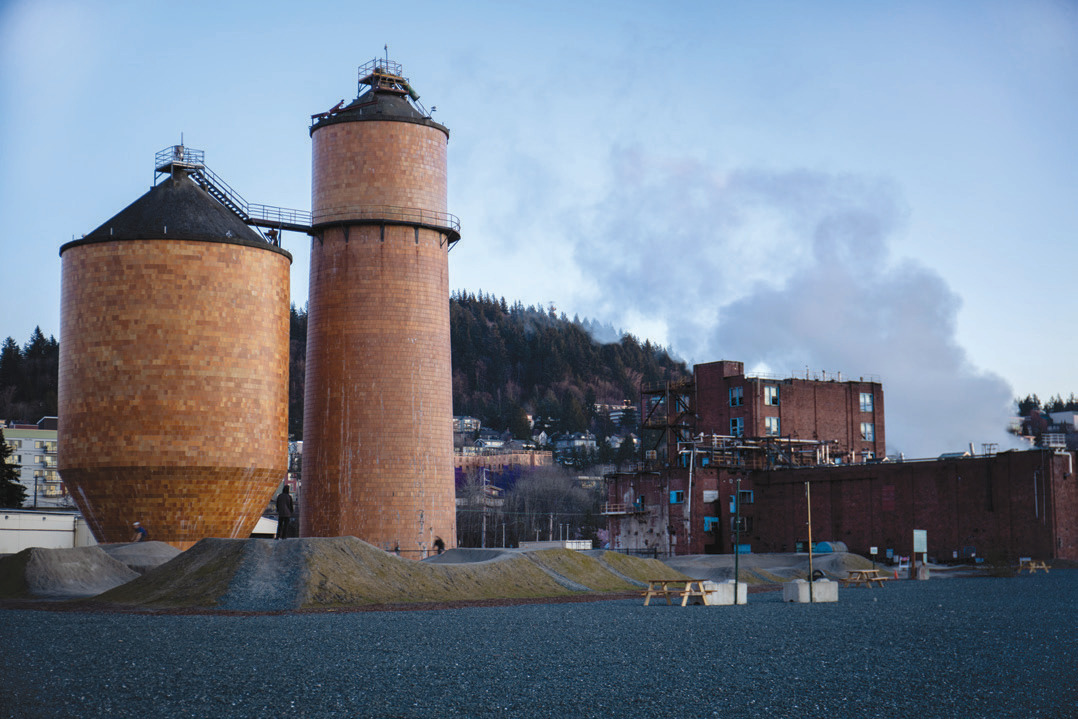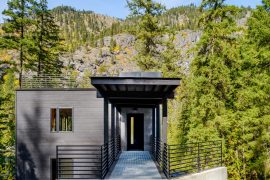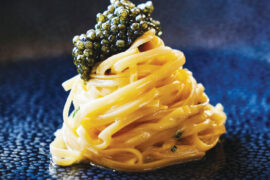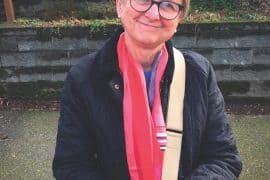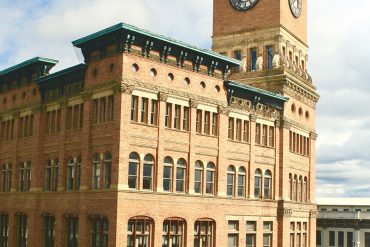A community-driven transformation is taking place on Bellingham’s waterfront
written by Ellen Hiatt
Aristotle opined that “Nature abhors a vacuum.” It will always be filled with something, and in the case of a defunct paper mill in Bellingham, for a time it was filled with vandalism and graffiti. Bellingham artists and activists put their heads together to fill that vacuum with community.
Words that muralist Gretchen Leggitt and community organizer Nick Hartrich bandy about include “activate,” “catalyze,” “community” and “action.”
It began when Hartrich convinced Puget Sound Energy to save nearly a half million dollars they were spending a year on cleaning up graffiti and vandalism by commissioning Leggitt to paint the state’s largest mural on 21,000 square feet of corrugated metal.
The two formed Paper Whale, a social purpose venture whose mission is to “cultivate community in an evolving program of multi-sensory events to inspire and creatively activate placemaking.”
At its core is a speaker series that is run like a “TED Talk meets a think tank.” The community brainstorms ideas at these events, in such high demand that there is a waiting list to attend. Paper Whale narrowed down thirty-five ideas to eight before taking them to the Port of Bellingham, which chose four of them.
The first to be implemented was the Noisy Waters Mural Festival, held last August. More than 135 artists from Hawaii to Calgary applied to be part of it, and eight were chosen, with eleven runners up.
The property is an expanse of gravel before imposing brick buildings, and space-age looking tanks that once held liquor (a solution of sodium sulfide and sodium hydroxide) to digest wood chips into pulp. Some of the industrial tanks are shaped like a massive globe and others like rockets waiting to be shot into space. Most are bare metal, rusty and hulking in the foreground. A couple are covered in tiles.
The expanse of brick walls and hulking sea containers that dot the area presented as an invitation to bored youth with a can of spray paint in hand.
As it goes, graffiti will have more graffiti. But a vibrant work of art invites conversation, energy and ideas. The void will be filled one way or another.
“Quite frankly, you’re going to make this Bellingham,” said Ken Bell, the Port Commission’s secretary. He lauded Paper Whale’s founders for their ability to take “a bunch of ideas floating around a room” and “actually getting it done.”
“It was intended to be a temporary solution for the waterfront … and it’s not going to go away,” he said. “What a great legacy to leave behind.”
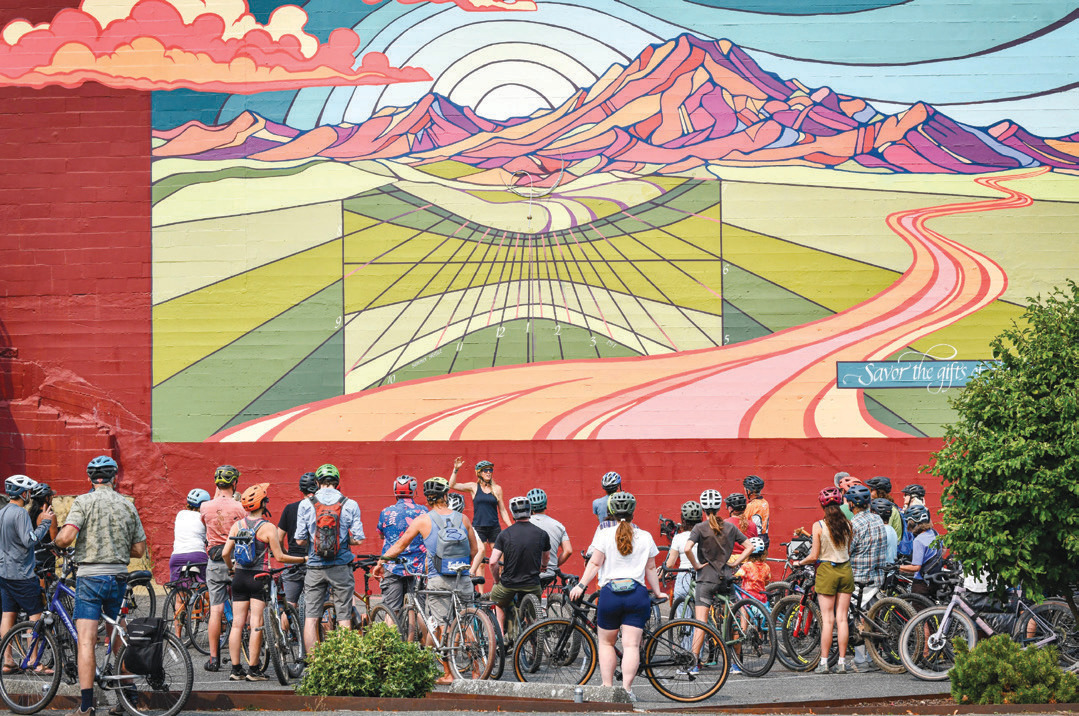
Photo by Paper Whale
The Noisy Waters Mural Festival was the first of the four ideas to be implemented. As with all the ideas, Leggitt puts a great deal of focus on providing opportunities for artists—artists who may not have seen a future or a path in art. Eight artists may have been chosen to create the murals, but another eleven were chosen to create a group mural project of their own.
And of those, a vote of the people chose three to earn a paycheck for walls that Paper Whale brokered over $22,500 in commissions.
Local artist Taj Williams was invited to give a spray painting workshop. The four workshops he gave were packed with would-be artists of all ages, from 10 to 60.
“He’s now totally driven to teach art,” she said.
“The most exciting part of the festival is the Indigiversal Collective,” a collection of artists from seven different tribes who collaborated on a 150-foot mural.
Added Hartrich when speaking to the commission, “The goal is to expand on the diversity of that art.”
The group is implementing their second project this January. The waterfront isn’t a very active place in the winter months. Cold and dreary, it seems as if it’s lying in wait for the local brewers to show up for another rousing summer arts festival. But Hartrich and Leggitt, and the community behind them, have other ideas.
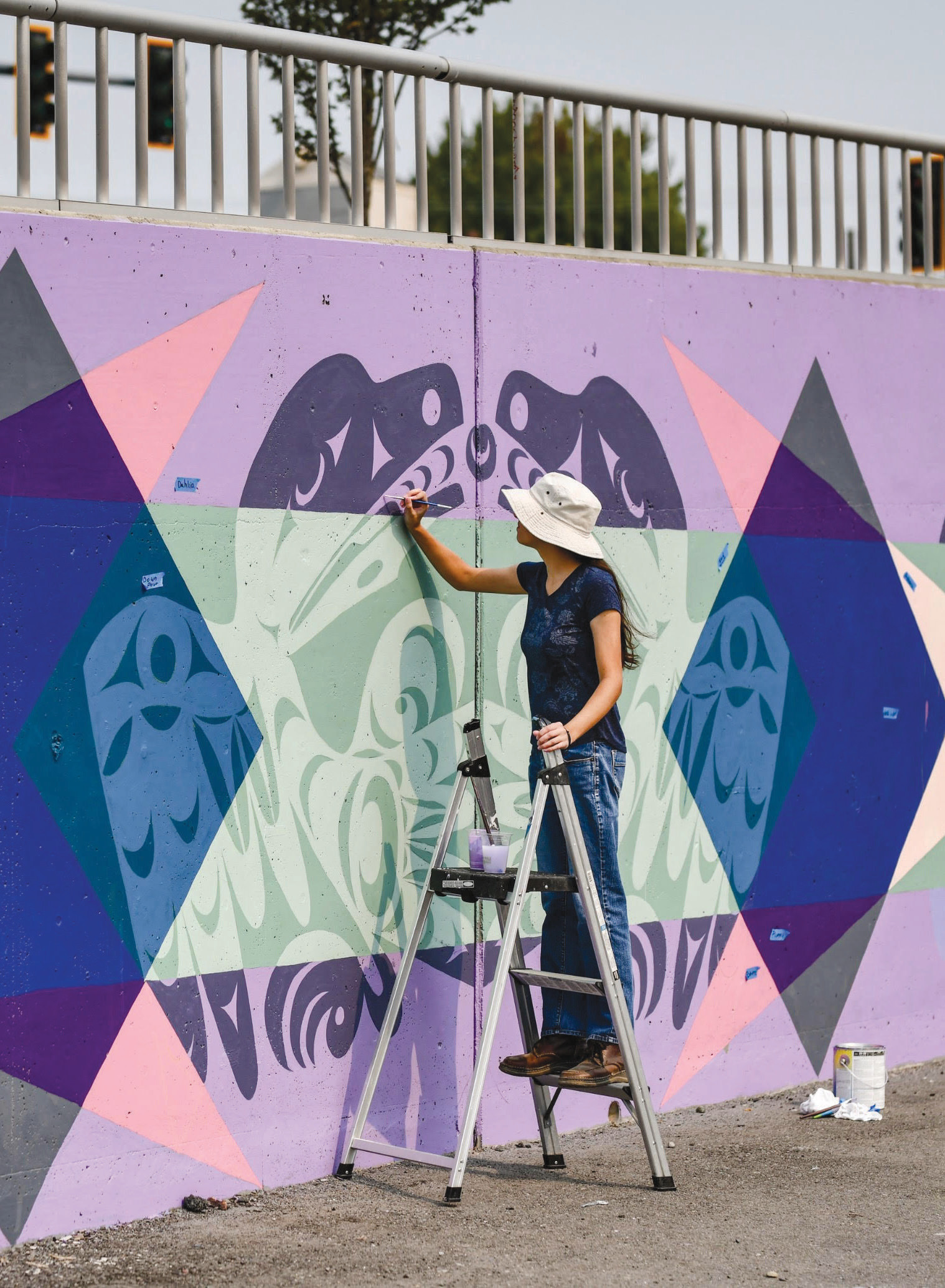
Photo by Paper Whale
Fire & Story will see the fabrication of large fire pits, installed and holding a warming fire by which storytellers, folk singers, indigenous members and others will share history, heritage and lore.
An additional proposed project could include curating a placement of wood-fired saunas for the “Sauna Portal.” “(We) feel a need and a void for the community to gather in these winter months,” said Hartrich.
A “Confluent Native Garden” will create an artistically designed community space that mimics the confluence of the mud flats on which the paper mill was built.
Hartrich explained that they were connecting community, creating experiences and “syncing cultural identities,” supporting the port through the lens of the community.
“Whatever recipe we are making, the people continue to show up,” he said.
Added Leggitt: “When people are inspired, they take action.”



